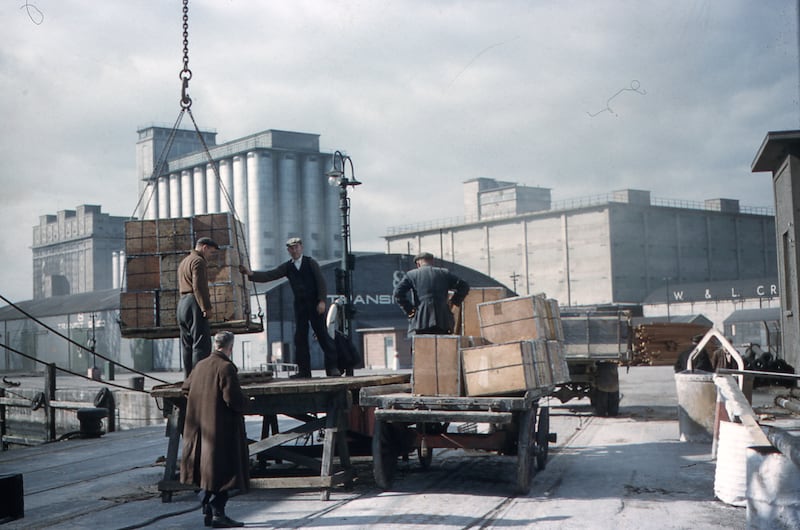A treasure trove of heritage items – some unseen for hundreds of years – has been uncovered as part of conservation work at Dublin Port.
They include the excavated remains of the original “East Wall” – one of the port’s earliest features – which can be viewed through a glass floor at the port’s former ESB substation.
The remains of the wall, which date from the 1720s, were discovered by the Dublin Port Company during conservation of the redbrick building, now a museum and exhibition centre where the port’s conservation strategy was launched on Tuesday. The original wall, which gave East Wall its name, protected the area from flooding. It once enclosed the eastern and northside of the land that became known as the North Lotts.
The story of the 18th century sea wall in the evolution of Dublin Port and the city, and the role of the substation in the early electrification of Dublin Port will go on permanent display within the restored building.
READ MORE

The Dublin Port conservation strategy also includes a timeline that charts the port’s journey eastward from the 1600s to the present day. Readers can trace the establishment of the North and South Lotts and the current Dublin Port estate, which were reclaimed from the sea over centuries.
There have been more than 300 recorded shipwrecks in Dublin Bay. Of these, 18 have been definitively located, the rest potentially still discoverable beneath the waves.
One shipwreck, dubbed “Millstone Wreck”, was discovered during dredging works. The ship dates back to the 18th century and, as part of the conservation strategy, its timbers and cargo of millstones have been studied and preserved. These slabs of old red sandstone were cut from exposed bedrock at Waterford Harbour to feed the mill industry in cities along the east coast but never reached their destination as the ship hit a storm and sank.
The strategy includes plans to open up further heritage assets in Dublin Port to the public, including the original Graving Dock No 1, which currently lies below ground beside Dublin Port Company’s performance venue, The Pumphouse. It will be excavated as part of the Alexandra Basin Redevelopment Project.
Newly-digitised images from 1920s to 1960s are also on display online dublinportarchive.com, including previously unpublished and rare colour images which show the life and workings of Dublin Port during the period.
The images came to light as part of Dublin Port heritage director Lar Joye’s work to catalogue, preserve and digitise the port’s 300-year-old archive, which is estimated to include 75,000 photographs and 30,000 engineering drawings, as well as maps and administration files dating back to 1707.
The images reveal a bustling port and show dock workers going about their daily work, including some tasks which no longer exist today. Workers can be seen weighing tobacco and moving peat moss, while a fleet of tiny Heinkel Kabine – also known as the “bubble cars” – wait to be exported.
The cars were built at Dundalk between 1956 and 1958 and exported through Dublin Port. The port archive includes pictures of them lined up on the docks.
- Sign up for push alerts and have the best news, analysis and comment delivered directly to your phone
- Find The Irish Times on WhatsApp and stay up to date
- Listen to our Inside Politics podcast for the best political chat and analysis











